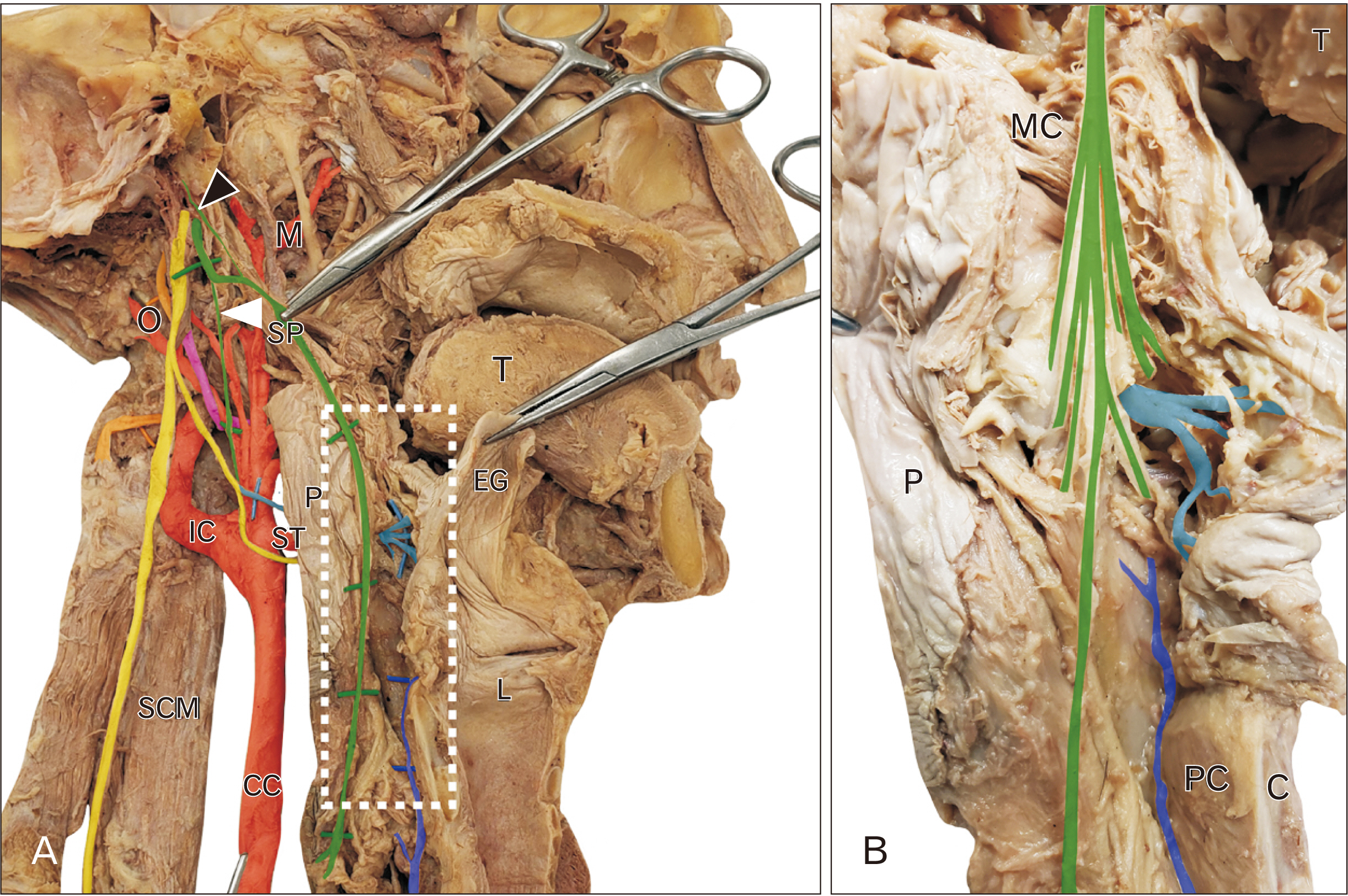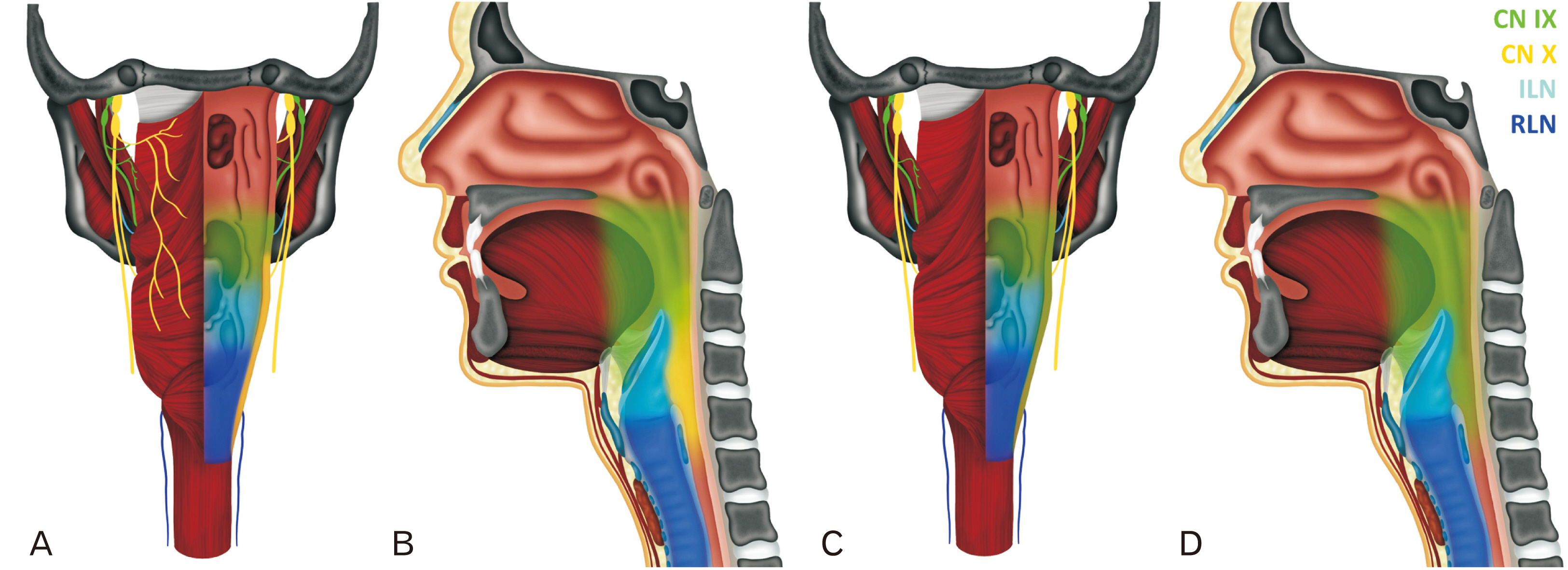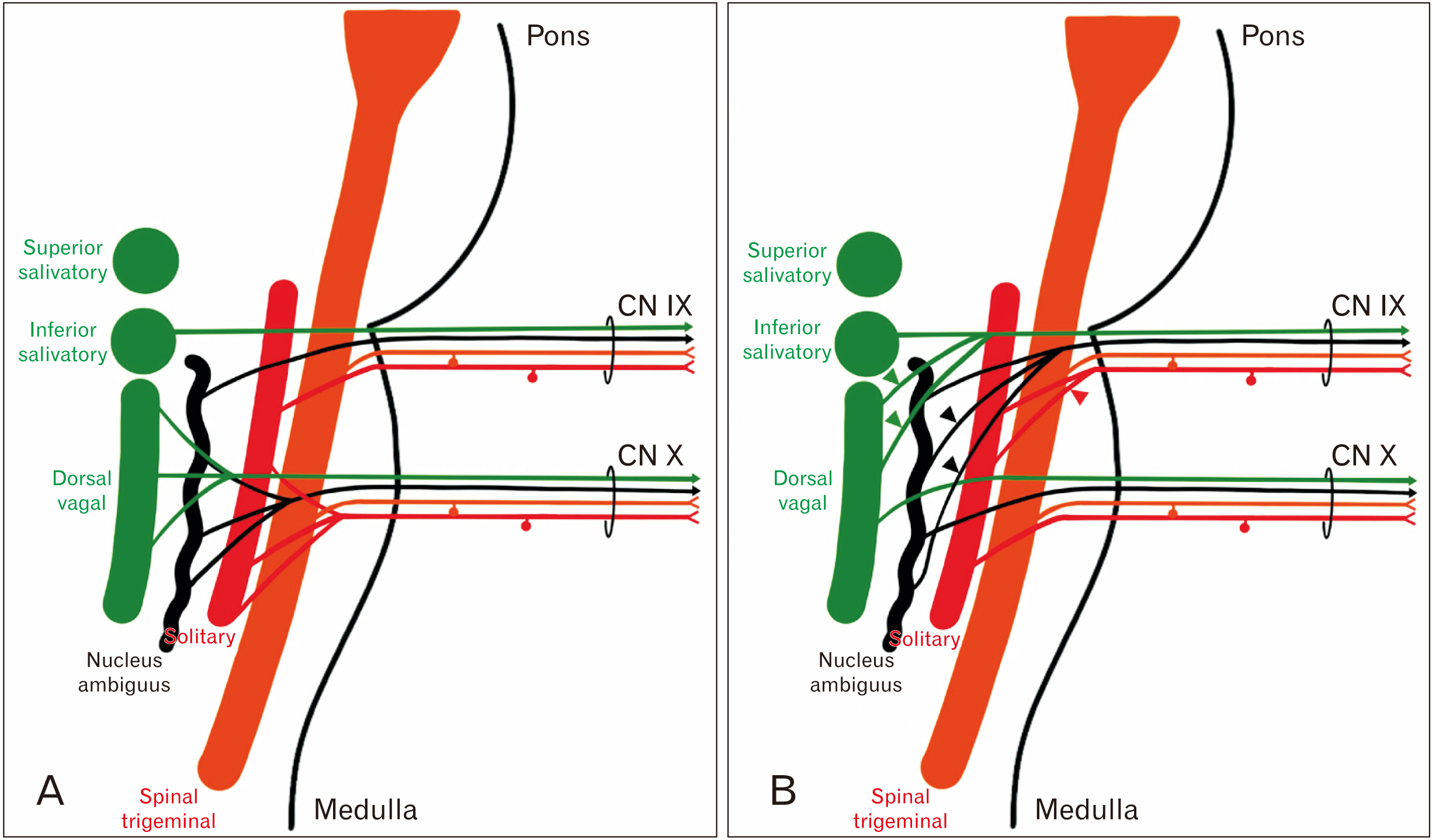Anat Cell Biol.
2021 Jun;54(2):285-288. 10.5115/acb.21.005.
A rare variation of the glossopharyngeal nerve
- Affiliations
-
- 1Department of Anatomy, Lake Erie College of Osteopathic Medicine, Erie, PA, USA
- KMID: 2516913
- DOI: http://doi.org/10.5115/acb.21.005
Abstract
- The glossopharyngeal nerve (CN IX) provides innervation to the parotid gland, carotid body/sinus, mucosa of the middle ear, tongue and oropharynx and the stylopharyngeus muscle. The vagus nerve provides innervation to the remaining skeletal muscle of the pharynx. CN IX contributes to the pharyngeal plexus and normally provides innervation to the mucosa of the oropharynx. Herein, we describe a previously undescribed variation of CN IX. CN IX was observed to enter the pharyngeal wall but instead of forming terminal branches in the tonsillar fossa, CN IX descended along the posterior wall between the mucosa and pharyngeal constrictors to the esophagus. This unusual branch of CN IX gave rise to numerous branches along the pharynx but did not intermingle with laryngeal branches from the vagus nerve. From this dissection, we developed innervation maps of the pharynx and propose a central miswiring mechanism for this unusual variation.
Keyword
Figure
Reference
-
References
1. Crosby EC, Humphrey T, Lauer EW. 1962. Correlative anatomy of the nervous system. Macmillan Co;New York:2. Standring S. 2016. Gray's anatomy: the anatomical basis of clinical practice. 41st ed. Elsevier;Philadelphia:3. Bergman RA, Thompson SA, Afifi AK. 1988. Compendium of human anatomic variation: text, atlas, and world literature. Urban & Schwarzenberg;Baltimore:4. Quain J, Schaefer EA, Thane GD. 1897. Quain's Elements of anatomy. 10th ed. Longmans, Green;London:5. Tubbs RS, Shoja MM, Loukas M. 2016. Bergman's comprehensive encyclopedia of human anatomic variation. Wiley Blackwell;Hoboken: DOI: 10.1002/9781118430309.6. Exner ID. 1884. Innervation des Kehlkopfes. Sitzungsber. d. Akad. d. Wissensch;Wien:7. Singh PM, Kaur M, Trikha A. 2013; An uncommonly common: glossopharyngeal neuralgia. Ann Indian Acad Neurol. 16:1–8. DOI: 10.4103/0972-2327.107662. PMID: 23661955. PMCID: PMC3644765.
Article
- Full Text Links
- Actions
-
Cited
- CITED
-
- Close
- Share
- Similar articles
-
- The Effect of Percutaneous Glossopharyngeal Nerve Block for Glossopharyngeal Neuralgia: A case report
- Glossopharyngeal Nerve Block for Idiopathic Glossopharyngeal Neuralgia: A case report
- A Case of Transient Glossopharyngeal and Hypoglossal Nerve Palsy after Laryngomicrosurgery
- Glossopharyngeal Neuralgia - A case report
- A Case of Herpes Zoster Oticus Involving Glossopharyngeal Nerve without Facial Nerve Palsy




